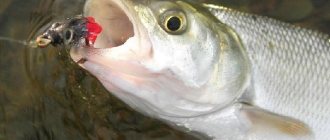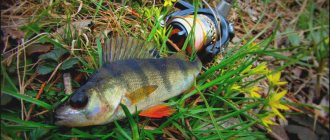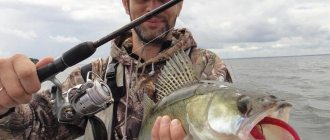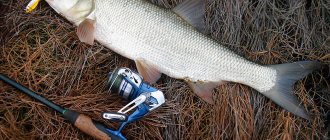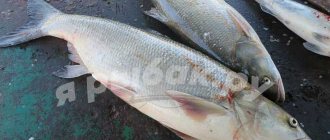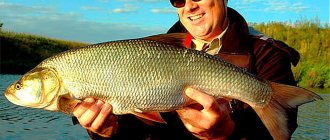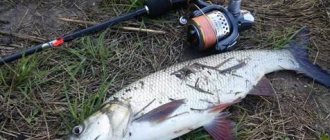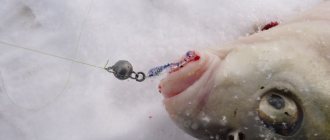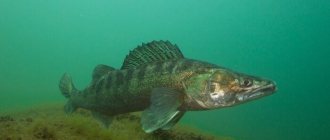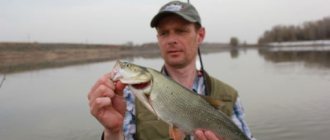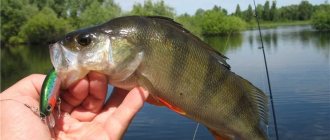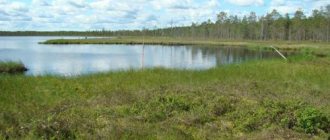Asp baits can be easily found in the available varieties of fishing simulators. This applies both to old and time-tested oscillating spoons, and to the new direction of artificial baits such as wobblers, streamers and silicone baits. Many well-known manufacturers of fishing accessories have developed a line of fishing tools specifically aimed at catching asp, which are already well known to our fishermen, and are in steady demand among spinning anglers who are keen on catching this powerful and cunning fish.
Catching baits for asp can be selected from all varieties of spinners, wobblers, silicone baits and artificial flies. No less interesting is the idea of making a practical attachment yourself, with your own hands. The article presented to the reader will be devoted to issues related to the selection of effective artificial asp bait.
General information about asp
The asp, or in other words sheresper, belongs to the species of carp fish, but despite the fact that fishermen are accustomed to seeing carp as peaceful inhabitants of the reservoir, the asp is clearly a predator. The fish has a silvery color with small and dense scales. The fins are grayish-olive in color. The body is elongated, with a small pointed head and a narrow mouth. The size of an asp can reach 10 kg, but most often in catches there are trophies from one and a half to three kilograms. The predator has excellent fighting qualities and is considered a worthy opponent for any fisherman. It lives in large rivers, staying on fast currents in different water levels, which depends on the period of the year.
Loves clean water highly saturated with oxygen. The sheresper hunts for small schooling fish, mostly bleak, stunning them with blows of the tail and subsequently collecting them in the water column. The predator feeds throughout the year, periodically changing the intensity of its activity. In spring and summer it lives in surface waters. As the water gets colder and ice cover sets in, the fish move to the depths. During a two-week spawning in mid-spring, it completely stops feeding. Most often it is the object of spinning hunting.
Asp behavior in the autumn season depending on the month
The more the water cools, the deeper the waters, following the shift of schools of small fish to the wintering pits, the object of hunting that interests us moves away. This factor relates to the principle of searching for a predator, on the basis of which spinners successfully catch asp in the fall.
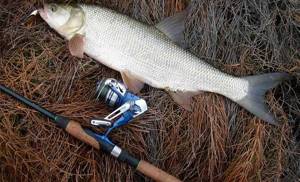
The autumn activity of fish is comparable to the pre-spawning period, which coincides in time with the first months of spring, and here it is only necessary to find out the direction of the movement of the asp by calculating its trajectories based on the movement of schools of bleak to wintering grounds. Next, we will look at the behavior of the predator during each individual month of autumn.
September
Catching asp in September is similar to searching for summer promising places by visually tracking its fight or the accumulation of seagulls in the hunting zones of a flock of asps. The fish, starting to flock into small schools, conduct group feeding, looking for prey on spits and shallows warming up on the not yet completely cold September days. Having identified such points, they are approached from the depths, on a boat, which allows the fisherman to remain less noticeable to the fish and accurately deliver bait to the battle areas from shorter distances.
October
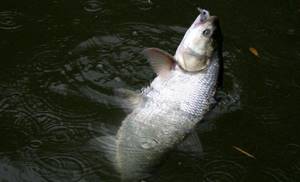
This month is successful in catching trophy fish feeding on smooth slopes into the depths from sand spits. In October, the sheresper feeds in short outings of 20–30 minutes, then completely stops its activity within a couple of hours. During daylight hours, there can be up to five or seven such exits during the day. A burst of bite begins from dawn until ten in the morning, stopping at lunchtime, peaking again only as dusk approaches.
November
In November, the fish move into the depths, which complicates the search for promising places. After all, in cold water, it is not possible to see the surface fight familiar to an asp hunter, and the fisherman’s knowledge of the water area of the reservoir with its deepest sections, on the edges of which it is necessary to look for the object of hunting, comes to the fore. Bites become rare, but confident and almost all are realized, which is associated with the persistence of the predator in the obligatory selection of the victim marked for attack.
Important! The absence of blows on the edge of the pits is sometimes compensated by the angler’s transition to catch nearby currents, where the asp, for a short time, go to streams more saturated with oxygen.
Requirements for baits
Lures for asp, due to the peculiarities of the structure of its mouth, have small dimensions with narrow, slender body shapes similar to small fish.
Important! The asp is a rather cautious and timid fish, which, sensing even the slightest danger, does not allow the angler to come within close range. Therefore, the baits used must have a high degree of range with relatively small sizes and weights.

Another significant criterion for the asp simulator is its game, which must have stability at low amplitudes of lateral movement during high-speed retrieves. The silver color of the bait is considered the most promising color. In any other case, the predator prefers to take imitators in soft natural tones, gray, dark white, dull silver or bronze, without a sharp play of colors and bright zonal transitions. The sound design of hunting tools when catching asps is ineffective, since the predator relies more on the visual perception of an object suitable for attack.
Varieties
Since fishing with a spinning rod is the most promising way to get a decent asp in the standings, the largest number of artificial baits is found in this sector of fishing accessories. In continuation of the article, we will consider each direction of the spinning fishing tool, in the specifics of the asp focus, highlighting the main requirements and characteristics of a particular simulator and dwelling on their advantages and possible disadvantages.
Turntables
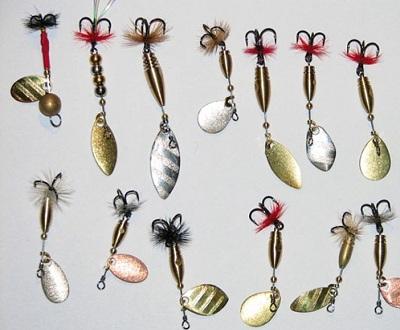
This modification of the turntable has an elongated narrow petal in the shape of a willow leaf when inserted, working at a rather sharp angle of pressing against the tool rod, which clearly and truthfully imitates small bleak. For catching predators, the values of the same analogues and originals of the Meps size classification from the first to the third number are suitable. Petals of silver and copper color are the most catchy compared to other tones. Wiring of the turntable begins immediately after the end of the time the instrument falls to the water, in the uppermost layers. High-speed wiring brings some of the best results. For the most part, turntables are catchers in the summer.
Oscillators
Spoon baits are considered a classic in asp spinning fishing. This type of bait can be used for fishing in both surface and deep water horizons in spring, summer and autumn. Asp are attracted to narrow-bodied silver-colored spinners with a length of no more than 70 mm. The width of such forms, even for the largest trophy, does not exceed 20 mm.
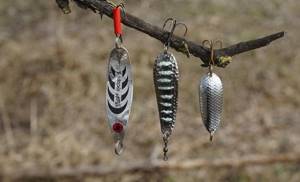
Long-distance and accurate casting of such a spinner ensures a weight of 12–20 grams. The stroke of the spinner should not be sweeping. When moving quickly, the spinner should follow the wave trajectory in a short travel corridor. To attract the attention of a predator, you can place a synthetic red thread on the tee of the spinner, and set a red attack point on the spinner itself, in the front part of it.
Jigs
A jig is a form of narrow, heavy spoon bait that looks like a file. It is mainly intended for vertical trolling, but in asp spinning fishing it is also successfully used on horizontal retrieves. Due to its high aerodynamic qualities, a long-range spinner is easily delivered into the hunting zone of a predator and, under a favorable set of circumstances and a precisely executed throw, is attacked by the fish immediately on the fall.
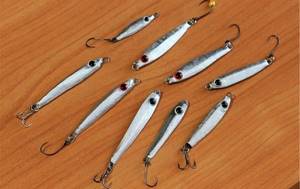
Used in silver or dull gold color schemes and in lengths not exceeding 70 mm. In summer, jig fishing is done using a spinning rod. In winter, knowing where the predator stays near the wintering pits, you can use a spoon to catch it plumb from the ice.
Streamers flies
Fly streamers have not become widespread in asp fishing due to their low range parameters. But using a bombard for these purposes, you can quite successfully catch a predator in the warm season, when it hunts intensively in the surface layers of water. When fishing, white and red streamers are used, tied on hooks from 10 to 6 numbers. The fly should not be too fluffy. In some fishing conditions, with strong predator activity at short distances, a spinning rod can replace fly fishing when fishing with this type of simulator. When asps travel long distances, you need to choose a spinner and switch to spinning.
Devons
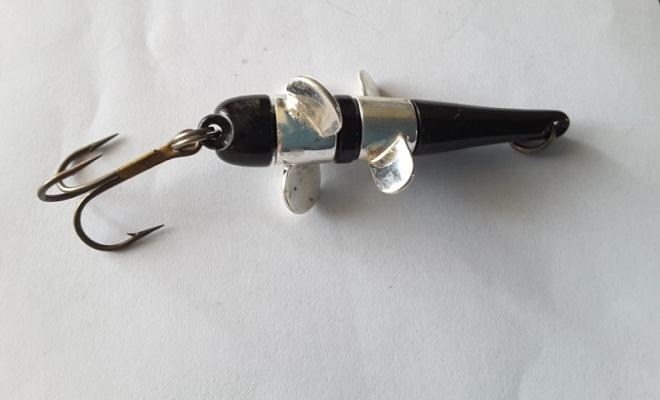
Devon is one of the varieties of turbine rotating spoons that bring success when catching sheresper. The Devonian dragonfly is especially promising. This type of unique tool has two turbines rotating in opposite directions, which makes fishing easier at long distances and prevents the lines from twisting during high-speed fishing. The lure itself can be cast in different water horizons, and therefore, hunt for predators in any season of the year, except for freeze-up. For asp, baits coated with silver, matte silver, or body-nickel/blade-silver combinations are better suited.
Wobblers
In asp fishing, the wobbler has recently begun to occupy no less significant positions than the classic type of spinner. Minnow-type wobblers with their own playing capabilities are especially often used. Oblong and narrow forms no longer than 50–70 mm with positive buoyancy are suitable for catching asps throughout the summer. As the fish move to the depths, they switch to deep-sea minnows measuring 70–90 mm.
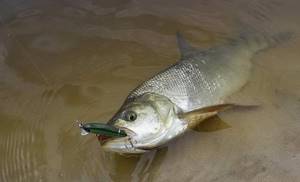
Colors of natural black and white and gray colors, as well as a variety of colors such as a Christmas tree decoration in silver or with blue tints, are considered promising colors for asp fishing. The wobbler is carried out on fast reels without any kind of stops or pauses. Spinners experienced in asp fishing consider both the use of a spinner and a wobbler to be equally successful. Therefore, they must have both types of these hunting tools in their arsenals.
Topwaters
Fishing with topwaters is successful in the summer season, when high activity of asp hunting is visually observed, expressed by frequent bursts on the surface. For the casting range of this surface bait, you need to correctly select its weight for the convenience of fishing with ultralight spinning equipment. Fishing with topwaters in the form of beetles with elongated bodies is best done in calm weather at the borders of currents with a backwater. Retrieving is carried out with constant fast reeling at the points of splashes, trying to move the topwater to the place where the fish strikes and after that lead it along a promising trajectory.
Silicone
If the choice of spoons is made depending on the season of the year, then silicones in asp fishing are considered autumn baits, mostly used at depths. Postings are carried out in the style of a stepped jig, fishing the edges of wintering pits. Vibrating tails are 10–12 cm long and it doesn’t matter in what colors, they are the most promising in such fishing conditions. Silicone can hardly be called the best bait for asp, but in the pre-winter period, when the predator becomes less active, catching it at depth is most promising with this type of bait, on heavy stationary jig heads.
Wobblers
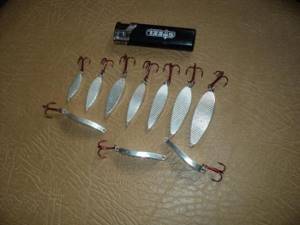
Lately, wobblers have become a serious competitor to famous castmasters in terms of catchability. Such baits, 7-8 cm long and painted silver, are an excellent imitation of a top or bleak. The only drawback that distinguishes such catchy asp spoons is that they have a short casting range, but recently modern models have already eliminated even this drawback.
Ensuring a normal casting range is achieved through the use of a magnetic loading system, as a result of which such baits have turned into extremely accurate and long-range devices. In this case, you can catch asp with suspenders, as well as floating or sinking baits. Among other things, some people use so-called surface walkers during fishing.
Fishing tactics using such spinners are selected depending on how buoyant the selected device is:
- Sinking baits should be used similarly to spoons, that is, cast into the places where the asp is fighting.
- Suspenders can be released at a fairly large distance downstream, after which wiring can be carried out.
- Floating models can be sent as far as possible downstream from a boat, island or bridge, depending on the fishing conditions.
Wobblers today are represented by the following models:
- Long Cast;
- Igge;
- Ali Magnet;
- X55F.
Rating of the best baits for asp
The rating of asp lures will help the novice spinning angler begin to form his own set of effective fishing tools, which have already been tested by time and the experience of real successful fishing trips.
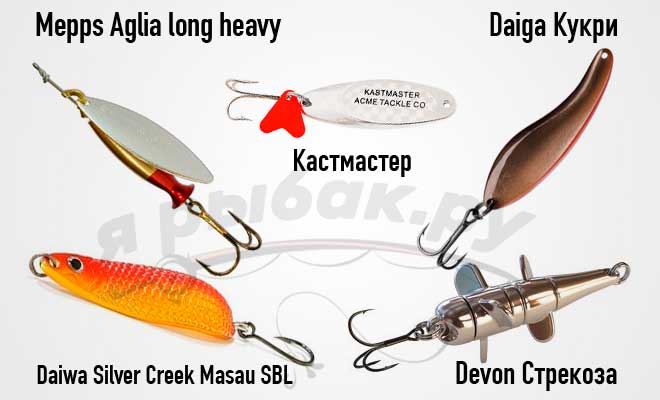
Rating of baits for asp
- There is no doubt that the first place in the asp arsenal should be occupied by the Castmaster spinner . It is ideally suited to the type of asp retrieve and has all the qualities for long-distance casting, and by manipulating the mass of the spoon, all water horizons are accessible for fishing.
- The second line behind the Meps turntable Aglia Long Heavy . This is the best model for asp fishing on medium and small rivers.
- In the middle of the top 5 is the spinner Daiga Kukri . With this tool, an angler can hunt on shallow spits and the edges of creeks with fast currents during the period of active predator activity.
- Fourth position for Daiwa Silver Creek Masau 17g SBL . A long-range spinner with a wide range of masses will ensure effective fishing, regardless of external conditions and the depth of the reservoir.
- Devon Dragonfly closes the top five . Without it, it is difficult to hope for success when fishing in vast areas of fast-flowing rivers, when the predator constantly stays at long distances.
Spoons for catching asp in autumn
Autumn fishing for asp differs from fishing at other times of the year, since it is at this time that the fish becomes very voracious, as it tries to gain weight for the winter. And at this time the asp will rush to any bait that is offered to him.
In the fall, heavy spoons are perfect for catching this predator. Rotating ones are best, weighing at least ten grams. The petal should not be very narrow. It is best to choose a calm color: dark brass or copper.
DIY asp baits
Making asp baits with your own hands, having hunting analogues and even seeing them in pictures, is not such a difficult task. After all, the instrument does not need any refinements in its play, and in ordinary use, blanks similar to asp baits are quite sufficient. For example, it is quite easy to make a fishing spoon from a teaspoon, using both the scoop itself and the handle for the spoon.
The size of the cutlery is ideal for asp fishing. Having a stainless steel tube with a diameter of 10–12 mm, cutting its edges at a bevel and equipping it with a tee on one side and a winding ring for fastening on the other, you can get a practical asp spoon. From a single rod of steel, having processed the edges for cutting at the desired angle, in just 30 minutes you can reproduce a castmaster similar to a spinner and a product quite suitable for fishing.
